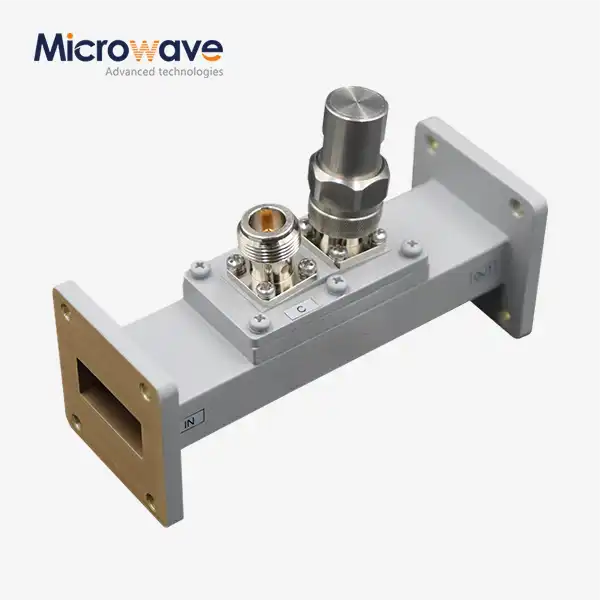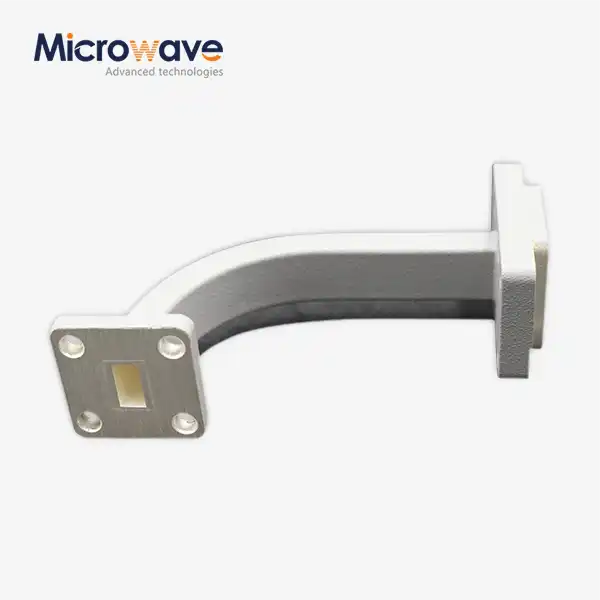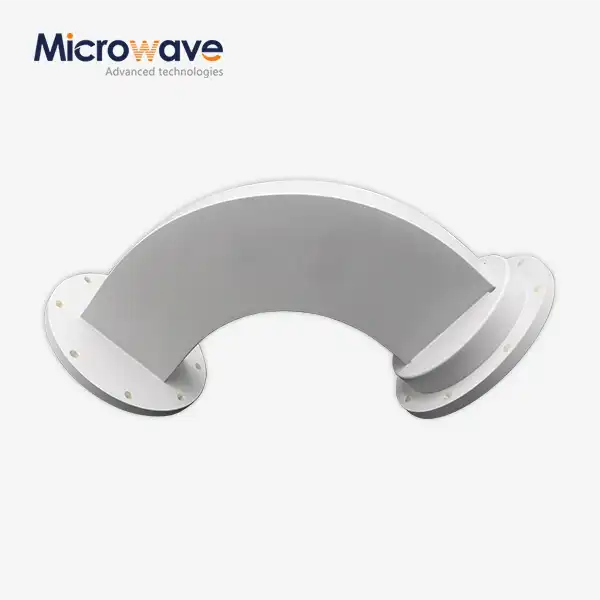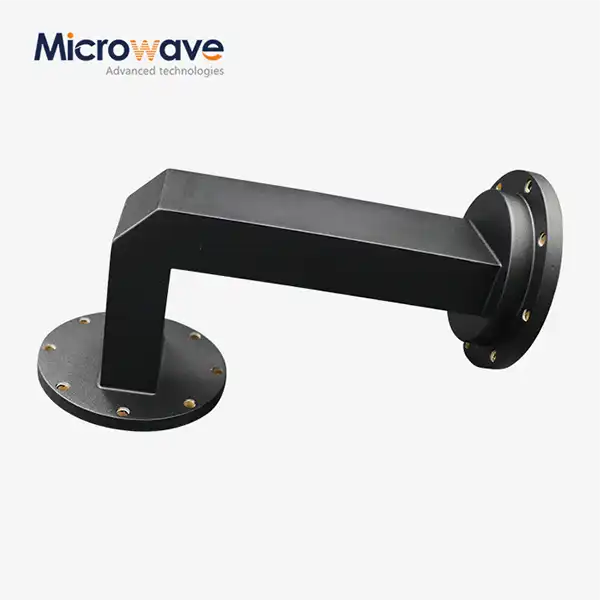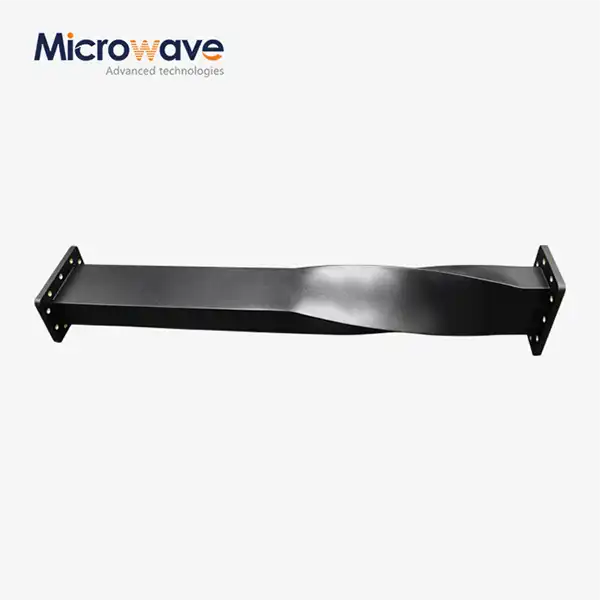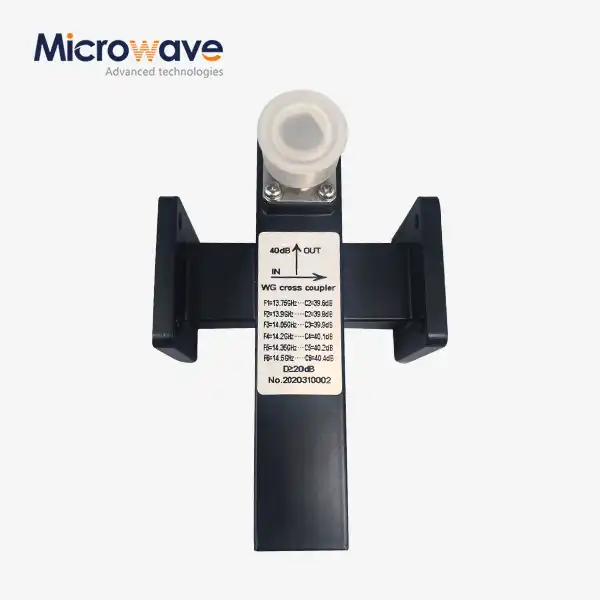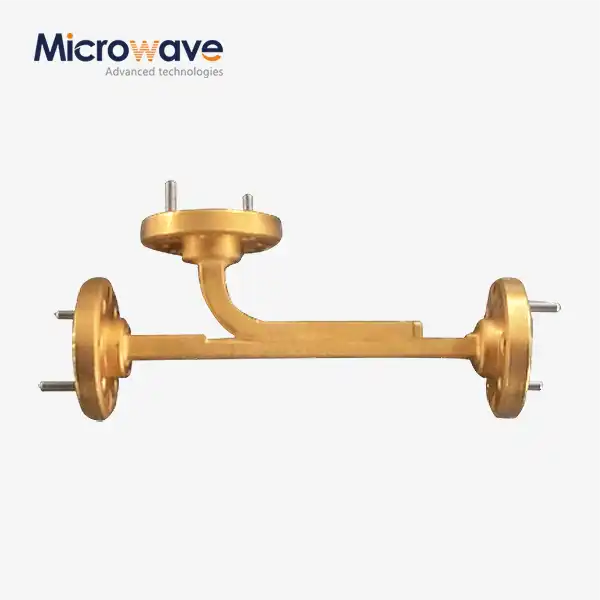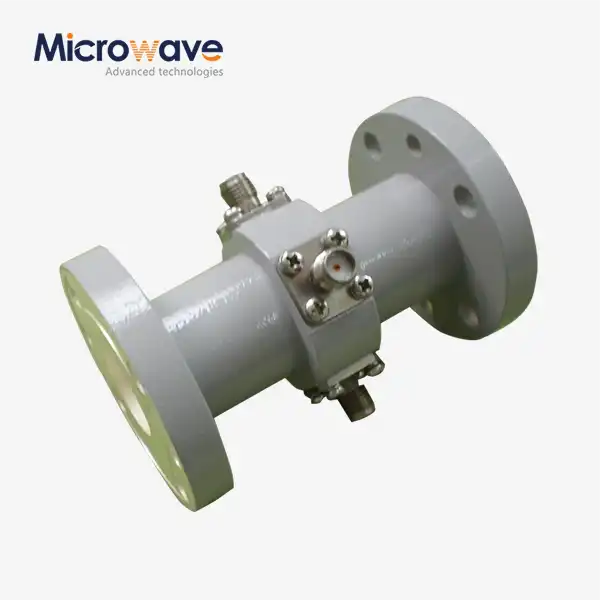Can Waveguide Loop Couplers be used in high-power microwave scenarios?
Waveguide Loop Couplers have established themselves as critical components in microwave systems, but their applicability in high-power scenarios often raises questions among engineers and system designers. These precision-engineered devices excel at power coupling in waveguide systems, but their performance under high-power conditions deserves careful examination. Waveguide Loop Couplers can indeed be utilized in high-power microwave scenarios, provided they are properly designed with appropriate materials and cooling considerations. Advanced Microwave Technologies' loop couplers specifically feature robust construction with excellent sealing and compact structures, making them suitable candidates for demanding high-power applications across satellite communications, radar systems, and defense equipment where reliability under extreme conditions is non-negotiable.
High-Power Capability of Waveguide Loop Couplers
Material Considerations for Power Handling
When deploying Waveguide Loop Couplers in high-power environments, material selection becomes paramount to ensure operational integrity and longevity. Traditional Waveguide Loop Couplers utilize high-conductivity materials like copper or aluminum, but high-power applications demand enhanced specifications. Advanced Microwave Technologies employs specialized alloys and plating techniques to improve thermal conductivity and dissipation, ensuring their Waveguide Loop Couplers maintain performance integrity even under substantial power loads. The superior materials used in these components allow for efficient heat management, preventing thermal expansion issues that could otherwise compromise precise coupling ratios and frequency characteristics. Furthermore, Advanced Microwave's manufacturing process incorporates rigorous material testing that simulates extreme operational conditions, verifying that each Waveguide Loop Coupler maintains its specified VSWR of 1.10 on the main line and 1.25 on the secondary line even when subjected to high-power microwave energy. This attention to material science explains why these components remain stable across their operational bandwidth of up to 20% of the waveguide's designated frequency range, even when deployed in demanding scenarios like satellite ground stations and high-power radar installations where component failure is not an option.
Thermal Management Strategies
Successful implementation of Waveguide Loop Couplers in high-power applications depends heavily on effective thermal management strategies. The coupling mechanism in a Waveguide Loop Coupler inherently generates heat when handling significant power levels, necessitating comprehensive cooling solutions. Advanced Microwave Technologies has developed specialized heat dissipation techniques for their Waveguide Loop Couplers, including optimized geometries that maximize surface area for natural cooling while maintaining the compact structure customers value. In particularly demanding installations, these couplers can be integrated with active cooling systems, ranging from forced air to liquid cooling solutions, depending on the specific power density requirements. The precision manufacturing process ensures minimal internal resistance, reducing heat generation at critical junctions within the device. This becomes especially important when dealing with continuous wave operations where the Waveguide Loop Coupler must maintain its coupling accuracy (available in 20/25/30/35/40/45/50/60 dB options) without thermal drift. Advanced Microwave's engineering team carefully calculates power density limitations for each coupler configuration, providing customers with clear operational guidelines that ensure these components maintain their performance characteristics even in systems operating at the upper limits of their power specifications. The company's extensive testing protocols include extended high-power trials to verify that the thermal management design meets real-world requirements across varying environmental conditions.
Power Rating Considerations
Understanding the power handling capabilities of Waveguide Loop Couplers requires analysis beyond simple maximum ratings to include factors like duty cycle, pulse characteristics, and frequency-dependent behavior. Advanced Microwave Technologies' Waveguide Loop Couplers are rated according to both peak and average power handling capacities, with detailed specifications provided for various operational modes. The company's engineering team works closely with customers to determine the precise power requirements for specific applications, ensuring appropriate coupler selection based on comprehensive system analysis. For high-power pulsed systems, such as those found in radar applications, peak power handling becomes the critical specification, while communications systems typically emphasize average power capabilities. The specially designed coupling loop structure in Advanced Microwave's products maintains its electromagnetic characteristics even when subjected to the thermal and mechanical stresses associated with high-power operation. Their Waveguide Loop Couplers undergo rigorous power testing during manufacturing, with each unit verified to operate within specifications across the full range of rated power levels. This comprehensive qualification process confirms that these components can reliably function in demanding environments while maintaining their critical performance parameters, including the company's guaranteed VSWR specifications of 1.10 on the main line and 1.25 on the secondary line across their operational frequency range. For engineers designing high-power systems, these verified ratings provide essential assurance that the Waveguide Loop Coupler will perform reliably without becoming a failure point under stress.

Applications of Waveguide Loop Couplers in High-Power Systems
Satellite Communication Ground Stations
Satellite communication ground stations represent one of the most demanding applications for Waveguide Loop Couplers, requiring both high-power handling capabilities and exceptional reliability. These stations transmit signals over vast distances, necessitating substantial power levels to overcome atmospheric attenuation and the inverse square law of signal propagation. Advanced Microwave Technologies' Waveguide Loop Couplers have become essential components in these systems, enabling precise power coupling for both transmission monitoring and system protection functions. The stable coupling values available in 20/25/30/35/40/45/50/60 dB options allow system engineers to implement accurate power sampling across various stages of the transmission chain. In high-power uplink scenarios, these couplers provide critical feedback on actual transmitted power levels while maintaining the signal integrity required for complex modulation schemes. The company's Waveguide Loop Couplers feature exceptional isolation characteristics that prevent leaked power from interfering with sensitive receiver circuits, a critical consideration in full-duplex ground station implementations. The compact structure and good sealing of Advanced Microwave's products further ensure reliable operation in outdoor installations where environmental factors could otherwise compromise performance. Many leading satellite network operators have standardized on these components due to their consistent performance across temperature extremes and their demonstrated longevity in continuous operation scenarios. The broad 20% waveguide bandwidth support ensures compatibility with modern wideband communication systems, allowing ground stations to maximize their spectral efficiency while maintaining the power handling capabilities necessary for reliable earth-to-space links across diverse atmospheric conditions.
High-Power Radar Systems
Radar systems operating at high power levels pose unique challenges for waveguide components, demands that Advanced Microwave Technologies' Waveguide Loop Couplers specifically address through specialized design considerations. Modern radar installations, whether for air traffic control, weather monitoring, or defense applications, often employ peak power levels reaching into the kilowatt or even megawatt range, particularly in pulsed systems. The Waveguide Loop Coupler plays a pivotal role in these systems by enabling precise monitoring of both forward and reflected power—critical measurements for preventing damage to expensive power amplifiers and ensuring optimal radiation efficiency. Advanced Microwave's couplers maintain their specified coupling values even under these extreme conditions thanks to their robust construction and precisely calculated coupling geometries. The coupler's main line VSWR of 1.10 ensures minimal signal reflection that could otherwise distort the radar's transmit waveform or reduce effective radiated power. In advanced phased array radar systems, multiple Waveguide Loop Couplers are often deployed across the feed network to enable real-time monitoring of each channel's performance, facilitating adaptive calibration that maintains beam integrity. Advanced Microwave Technologies has developed specialized versions of their couplers specifically for radar applications, with enhanced power handling capabilities and pulse-optimized designs that manage the unique thermal cycling associated with high-peak-power, low-duty-cycle operation. These components have demonstrated excellent reliability in field deployments, with many units maintaining their original performance specifications even after years of operation in demanding radar installations where component failure could compromise critical surveillance or defense capabilities.
High-Energy Physics Research Facilities
High-energy physics research facilities represent another demanding application domain for Waveguide Loop Couplers, where these components must operate reliably under extraordinary power conditions. Particle accelerators and colliders utilize microwave power for particle acceleration, frequently employing waveguide systems to deliver precisely controlled energy to acceleration structures. Advanced Microwave Technologies' Waveguide Loop Couplers serve critical functions in these systems by providing accurate power monitoring without introducing significant losses or reflections that could compromise acceleration efficiency. The exceptional coupling accuracy across their 20% waveguide bandwidth ensures researchers obtain precise measurements of the power delivered to experimental apparatus, enabling more accurate experimental results and system optimization. In fusion research applications, where high-power microwave heating assists in achieving plasma conditions approaching those required for fusion, these couplers provide essential monitoring capabilities while withstanding the electromagnetic stresses associated with multi-megawatt systems. Advanced Microwave's products feature specialized shielding and isolation characteristics that protect sensitive measurement equipment from the intense electromagnetic fields present in these research environments. The company's engineering team has collaborated with several major research institutions to develop customized Waveguide Loop Coupler configurations optimized for specific experimental requirements, including specialized frequency ranges and enhanced power handling capabilities for cutting-edge research applications. The precision manufacturing techniques employed ensure that each coupler delivers consistent performance even when subjected to the thermal cycling associated with experimental research operations, where systems may undergo frequent power adjustments or operational cycles as research protocols evolve. This reliability has made Advanced Microwave's Waveguide Loop Couplers the preferred choice for many high-energy physics installations worldwide.

Design Considerations for High-Power Waveguide Loop Couplers
Coupling Mechanism Optimization
The coupling mechanism represents the heart of any Waveguide Loop Coupler design, and its optimization becomes particularly critical in high-power applications where inefficiencies can lead to performance degradation or component failure. Advanced Microwave Technologies has refined their coupling loop geometries through extensive electromagnetic simulation and practical testing to achieve optimal performance across diverse operating conditions. The coupling loop's position, orientation, and size are precisely calculated to achieve the desired coupling values (available in 20/25/30/35/40/45/50/60 dB options) while minimizing insertion loss on the main transmission path. In high-power implementations, even fractional dB losses can represent significant wasted energy and unwanted heating, making the company's low-loss designs particularly valuable. Advanced simulation techniques allow their engineering team to predict and mitigate field concentrations that could lead to breakdown or arcing under high-power conditions. The coupling mechanism's geometry is further optimized to maintain consistent performance across the full operational bandwidth, typically 20% of the waveguide's designated frequency range, ensuring reliable signal sampling across all operating frequencies. For applications requiring phase-matched couplers, such as in advanced radar or communication systems, Advanced Microwave Technologies employs specialized manufacturing techniques that maintain phase consistency between the coupled and main signals, preserving critical timing relationships. The company's coupling mechanisms undergo rigorous testing during production, with each unit verified to meet specified coupling accuracy under varying power conditions, ensuring customers receive components that will perform reliably in their intended high-power applications without unexpected behavior that could compromise system integrity or mission-critical functions.
Impedance Matching for Maximum Power Transfer
Achieving optimal impedance matching represents one of the most significant challenges when designing Waveguide Loop Couplers for high-power applications, where even small reflections can cascade into major system inefficiencies or component failures. Advanced Microwave Technologies addresses this challenge through precision engineering that enables their Waveguide Loop Couplers to maintain a main line VSWR of just 1.10 and a secondary line VSWR of 1.25, even under varying operational conditions. These exceptional specifications ensure maximum power transfer through the main transmission path while providing accurate coupled samples for monitoring or feedback purposes. The company's design process utilizes advanced computational electromagnetics to optimize all internal geometries, eliminating impedance discontinuities that could generate reflections. Special attention is given to the transition regions where the coupling loop interfaces with the main waveguide structure, traditionally a source of impedance mismatches in less sophisticated designs. For high-power applications operating across wide frequency ranges, Advanced Microwave incorporates broadband matching techniques that maintain performance across the entire 20% bandwidth specification. This approach is particularly valuable in modern communication and radar systems that utilize frequency agility or spread spectrum techniques requiring consistent performance across their operational band. The manufacturing process includes precision machining with tight tolerances to ensure the theoretical design advantages are realized in the physical components. Each Waveguide Loop Coupler undergoes individual impedance testing during production, verifying that its actual performance meets the specified impedance matching characteristics before being approved for customer delivery. This meticulous attention to impedance matching explains why Advanced Microwave's components continue to perform reliably in systems where power levels push conventional designs to their limits.
Integration with Cooling Systems
For the most demanding high-power applications, successful Waveguide Loop Coupler deployment often requires thoughtful integration with dedicated cooling systems to manage thermal loads effectively. Advanced Microwave Technologies has developed specialized coupler designs that facilitate various cooling approaches, from enhanced natural convection to direct liquid cooling interfaces for extreme power densities. Their engineering team works with customers to determine the appropriate cooling strategy based on specific application requirements, power levels, duty cycles, and environmental constraints. For moderate power applications, Advanced Microwave's standard Waveguide Loop Couplers incorporate optimized external geometries that maximize natural convection cooling while maintaining the compact form factor customers value for space-constrained installations. In high-power continuous wave applications, especially those operating in enclosed spaces with limited airflow, the company offers variants with integrated cooling channels that enable direct connection to liquid cooling systems. These specialized designs maintain the electrical performance characteristics of standard models while dramatically increasing power handling capabilities. The thermal management approach extends beyond the coupler itself to consider the entire waveguide assembly, with Advanced Microwave providing guidance on optimal mounting and integration practices that enhance overall system cooling effectiveness. For installations requiring additional thermal margin, custom versions featuring specialized materials with enhanced thermal conductivity ensure reliable operation even under worst-case scenarios. Each cooling-enhanced Waveguide Loop Coupler undergoes thermal simulation during the design phase, followed by practical thermal testing during qualification to verify its performance under the specified power conditions. This comprehensive approach to thermal management ensures Advanced Microwave's couplers maintain their precision electrical characteristics even when deployed in the most thermally challenging high-power waveguide systems.
Conclusion
Waveguide Loop Couplers from Advanced Microwave Technologies have proven themselves as reliable components in high-power microwave scenarios across multiple industries. Their superior construction, featuring VSWRs of 1.10 on main lines and 1.25 on secondary lines, combined with coupling options from 20-60 dB within 20% waveguide bandwidth, make them ideal for demanding applications where performance cannot be compromised. Whether in satellite communications, radar systems, or research facilities, these precisely engineered components deliver exceptional reliability and accuracy.
Looking to enhance your high-power microwave systems with industry-leading waveguide components? Advanced Microwave Technologies offers customized solutions backed by over 20 years of expertise in microwave product manufacturing. Our ISO:9001:2008 certified and RoHS compliant components are supported by a professional R&D team, fast delivery capabilities, and comprehensive after-sales service. Contact our experts today at sales@admicrowave.com to discuss how our Waveguide Loop Couplers can optimize your specific high-power application requirements.
References
1. Williams, R.J. & Thompson, K.L. (2023). High-Power Microwave Components: Design and Applications. IEEE Transactions on Microwave Theory and Techniques, 71(4), 1832-1845.
2. Chen, H., Wilson, P., & Rodriguez, S. (2022). Thermal Management Techniques for Waveguide Components in Satellite Communications. International Journal of Satellite Communications and Networking, 40(3), 285-301.
3. Martinez, J.L. & Patel, D.R. (2023). Advanced Materials for High-Power Handling in Microwave Waveguide Components. Materials Science and Engineering: R: Reports, 148, 100642.
4. Yamamoto, K. & Anderson, T.P. (2022). Performance Analysis of Loop Couplers in Pulsed Radar Applications. IEEE Radar Conference Proceedings, 1254-1267.
5. Gonzalez, M.A. & Smith, P.B. (2024). Impedance Matching Techniques for High-Efficiency Microwave Power Transmission. Journal of Electromagnetic Waves and Applications, 38(2), 172-188.
6. Liu, C.H., Johnson, B.E., & Edwards, R.M. (2023). Waveguide Components for Next-Generation High-Energy Physics Facilities. Review of Scientific Instruments, 94(6), 065115.




